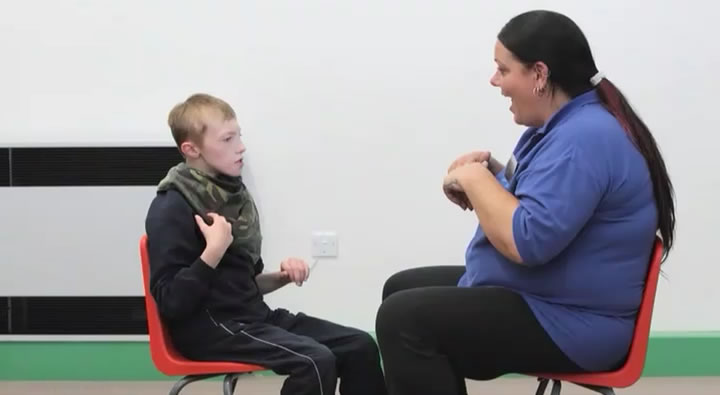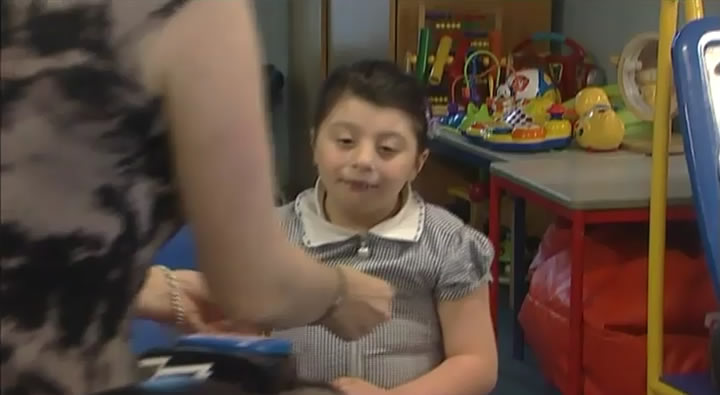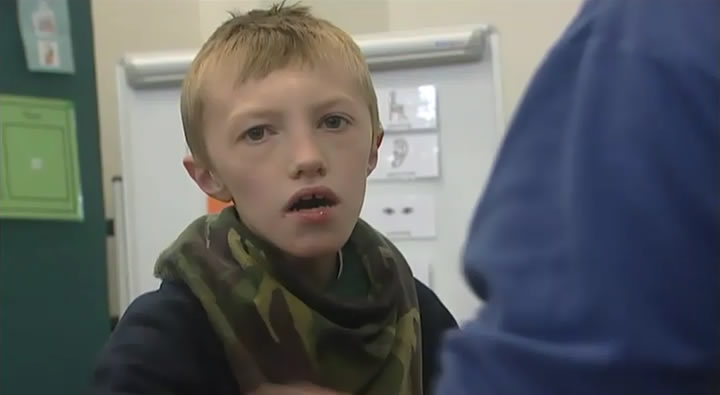Intensive Interaction
Listen to this audio clip in which Corinna, the headteacher of a special school, explains what intensive interaction is.
What is intensive interaction?
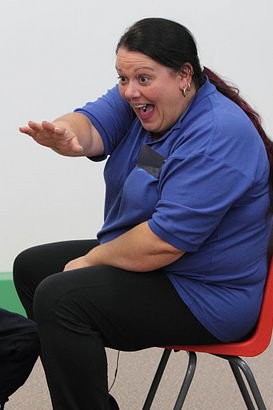
- Intensive interaction was developed by Dave Hewett and Melanie Nind, who were teachers at Harperbury School in Hertfordshire.
- Intensive interaction is a very practical approach to interacting with children with complex needs who do not find it easy to communicate or to be social.
- Intensive interaction helps children and adults to relate better to each other and to enjoy each other's company more.
- Intensive interaction is fun.
- The adult is guided by what is known about how communication typically develops for young children. The adult applies this knowledge in a way that is sensitive and respectful to the child, whatever their age.
Who is intensive interaction for?
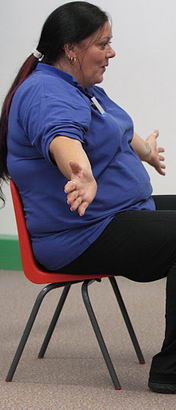
- Intensive interaction has been developed for children whose learning difficulties are severe and complex.
- It is particularly useful when communication is made more difficult by additional physical or sensory impairments or autism.
- At one extreme, it may be useful with children who are very 'difficult to reach', living socially isolated lives, perhaps having a range of self-stimulatory behaviours and not showing motivation to be with other people.
- Equally, the approach is useful for children who may be highly social in many ways and have many successful interactions with other people, yet may still need to develop further knowledge and ability in areas such as, using and understanding eye-contact and facial expressions, taking turns in exchanges, or developing vocalisations and moving towards speech.
Intensive interaction in practice
Watch an intensive interaction session with Leila.
How does intensive interaction work?
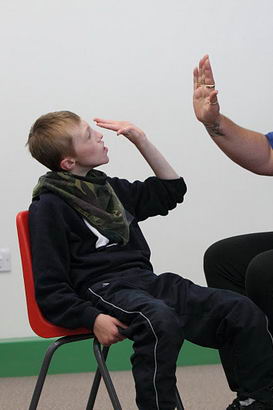
- Intensive interaction teaches the child the fundamentals of communication.
- It is a highly practical approach. The only equipment required for this approach is a sensitive adult to be the interaction partner to the child.
- The approach works by progressively developing enjoyable and relaxed interaction sequences between the adult and the child. These interaction sequences are repeated frequently and gradually grow in duration, complexity and sophistication.
- As this happens, the fundamentals of communication are gradually rehearsed and learnt in a free-flowing manner.
The principles of intensive interaction
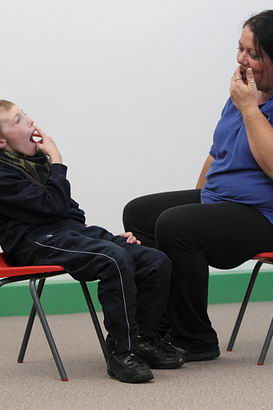
- A central principle is that the adult builds the content and the flow of the activity by allowing the learner to lead and direct, with the adult responding to and joining in with the behaviour of the learner.
- The style of the adult is relaxed, non-directive and responsive.
- This simple principle is the one used by parents in interactions with babies during their first year. The first year is the period of development when a baby carries out intense and very rapid learning of the fundamentals of communication.
- Much of the development of intensive interaction was based on the scientific research on the way in which babies learn to communicate during that first year.
Characteristics of an intensive interactive
session

- The interactive sessions are frequent, quite intense, but also fun-filled, playful and enjoyable.
- Both participants should be at ease with enjoyment of the activity as the main motivation.
- A session could be highly dynamic, with a great deal of vocalisation, sometimes with fun-filled physical contacts. A session could also be peaceful, slow and quiet.
What do you do?
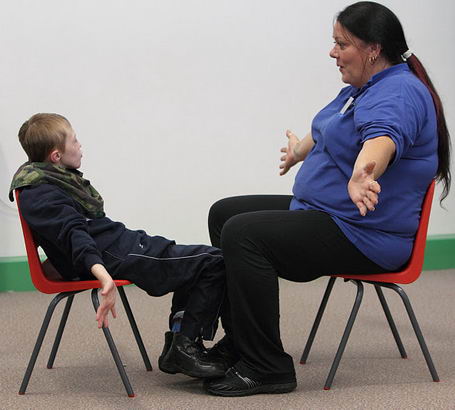
- Intensive interaction can be used as a way of teaching or simply as a way of being with children.
- It enables us to focus on the quality of our everyday interactions.
- When we adopt intensive interaction as an approach, we go about things in a particular way - we adopt a particular interactive style.
An intensive interactive session
Watch the video of Lesley, a senior teaching assistant, working with Jordan. Notice how she:
- Adjusts how she communicates non-verbally.
- Takes Jordan's lead - responding to things he does.
- Treats the things that Jordan does as if they are communication.
- Uses sensitive observation to judge how well the interaction is going.
- Uses timing and rhythm in the interactions.
- as fun - intensive Interaction sessions should be enjoyable and are often playful.
Being playful does not mean losing
dignity
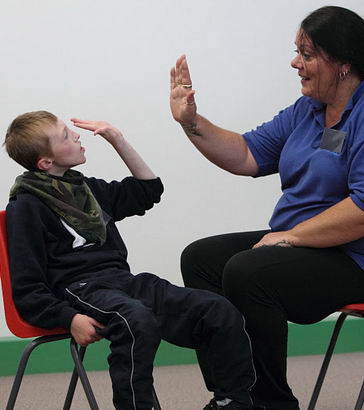
- When intensive interaction is used with older children, issues of age-appropriateness may arise because the approach can feel like "babying" the child.
- However, the interaction can be adjusted to maximise the chances of the child finding the approach meaningful. Being playful does not mean losing dignity.
- Intensive interaction can give children with complex needs an opportunity to interact and learn about communication that they are unlikely to have otherwise.
When and where?
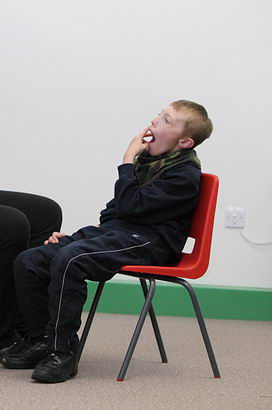
You can use the intensive interaction approach at any time and in any place, for example:
- You can seize opportunities as they arise - during care tasks, during quiet moments or when the child is in the mood for being sociable, or
- You can set aside some time each day when there is nothing to distract you from giving full attention to the child.
You may also find it helpful to find time to reflect upon the intensive interaction and to write down what you learnt about the child and your developing relationship with the child.
